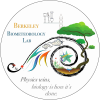Reports
Contents
| Title: | Bouldin Corn - NDVI (SRS, Apogee, Arable, Planet) | ||||||||||||||||||||||||
| Date: | 2017-06-05 - 2021-04-26 | ||||||||||||||||||||||||
| Data File: | BC_NDVI.csv | ||||||||||||||||||||||||
| Refers to: | BC,882103020,2046503357,C002445,C003251 | ||||||||||||||||||||||||
|
Various sensors measuring NDVI have been installed across the Delta sites over the last several years. At some sites, the SRS sensors from Decagon/METER have been drifting low, so I wanted to compare them with other NDVI measurements.
For some sites with I also compared GCC with the various NDVI values to see how much GCC values varied year over year. Photos were taken by a variety of cameras: Netcam Stardot cameras (the official camera of the Phenocam Network®), Canon point-and-shoot cameras with custom firmware, or a Raspberry Pi camera. I used Joe's datafetch tool to calculate daily average mid-day values of NDVI and GCC from the various sensors. Mid-day values included data from 11:00 to 13:00, 5 values a day. I despiked the data in Excel.
See reports for other Delta sites here: East Pond / Sherman Wetland Temp Tower (both sites had same set of SRS sensors) Twitchell Alfalfa / Sherman Barn (both sites had same set of SRS sensors) Â
Â
Arable image of Bouldin Corn on June 29, 2019 (DOY 180). Lighter colors are higher NDVI and darker colors are lower NDVI (e.g., roads, bare soil in fields). I used a sampling area of 9 pixels, marked by the red box. Figure 1. Bouldin Corn data. The SRS sensor looks reasonable for the first 3 years, then starts decaying in 2020, although it does capture an increase in NDVI during fall 2020 that is also apparent in the Arable data. The Planet data matches well except that it has higher NDVI values during the growing season. We have enough Arable data that we can use a linear regression from 2018 and 2019 to correct the 2020 SRS data. We can also try this with Planet data after we receive 2020 data. For this analysis, I didn't quantify exactly when the sensor start decaying (e.g. by comparing weekly avg regression slopes). I'm just assuming the decay started after the tower fell down on 2019-11-26. Â Figure 2. Incoming Red and NIR bands from SRS and Arable sensors. No obvious decay in the SRS sensor. Â Figure 3. Reflected Red and NIR bands from SRS and Arable sensors. Obvious decay in 810out sensor starting in 2020. Â Figure 4. Red reflectance from SRS, Arable, and Planet data. No obvious trends year after year. Â Figure 5. NIR reflectance from SRS, Arable, and Planet data. SRS NIR has a clear drop in 2020 because of the 810out sensor degrading. Â Figure 6. Linear regression of BC data for 2018-2019. I used data from 2017-06-05 to 2019-11-26 to make the regression. The tower fell down in a windstorm sometime around 2019-11-26. The linear regression with Arable looks good (R2=0.97) and can be used to correct the SRS data for 2020-2021. Â Figure 7. Bouldin Corn data with corrected SRS data. I used data from 2017-06-05 to 2019-11-26 to make a regression with Arable NDVI data and applied the correction to data from 2019-11-27 onwards. Corrected SRS is still mostly negative though...think about this some more. |
|||||||||||||||||||||||||
| |


